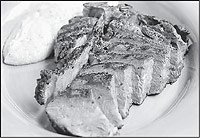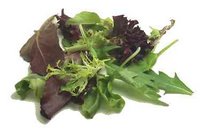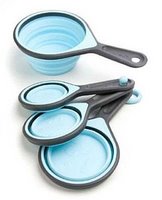Tips for Cold Suppers
 When the weather is steamy and muggy the last thing you might want to come home to is a hot dinner. Or maybe you want to have a picnic on the weekend, but don't want the usual sandwiches.
When the weather is steamy and muggy the last thing you might want to come home to is a hot dinner. Or maybe you want to have a picnic on the weekend, but don't want the usual sandwiches.The New York Times has an article today looking at how to best prepare meats so that they can then be served cold. There are some good tips and principles to keep in mind when doing this:
...if the primary goal is to serve it chilled, the trick is to swab the meat with flavor — lots of chili powder, oregano, garlic, mustard and olive oil — before sliding it into the oven (roast it rare so it stays tender and juicy).
This works with vegetables as well:
The same applies to sturdy vegetables like green beans, carrots, broccoli, snow peas and celery. Simply cook them lightly, dress them intensely (with, for example, soy sauce, garlic, good olive oil, plenty of salt, pepper and lemon juice), and, given enough time for everything to meld, the salad will sparkle. One thing to bear in mind, however, is that the acid in the dressing will dim any bright green colors. Keep some fresh chopped herbs around to serve as a last-minute garnish.









